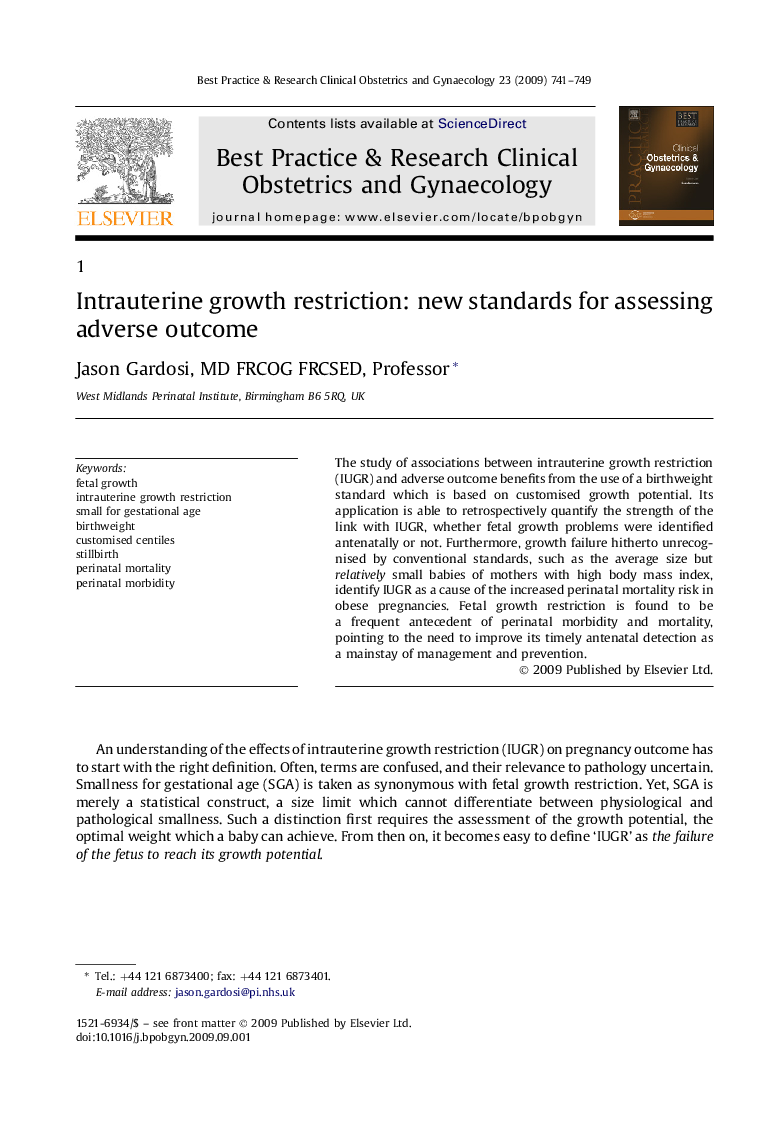| Article ID | Journal | Published Year | Pages | File Type |
|---|---|---|---|---|
| 3907386 | Best Practice & Research Clinical Obstetrics & Gynaecology | 2009 | 9 Pages |
The study of associations between intrauterine growth restriction (IUGR) and adverse outcome benefits from the use of a birthweight standard which is based on customised growth potential. Its application is able to retrospectively quantify the strength of the link with IUGR, whether fetal growth problems were identified antenatally or not. Furthermore, growth failure hitherto unrecognised by conventional standards, such as the average size but relatively small babies of mothers with high body mass index, identify IUGR as a cause of the increased perinatal mortality risk in obese pregnancies. Fetal growth restriction is found to be a frequent antecedent of perinatal morbidity and mortality, pointing to the need to improve its timely antenatal detection as a mainstay of management and prevention.
